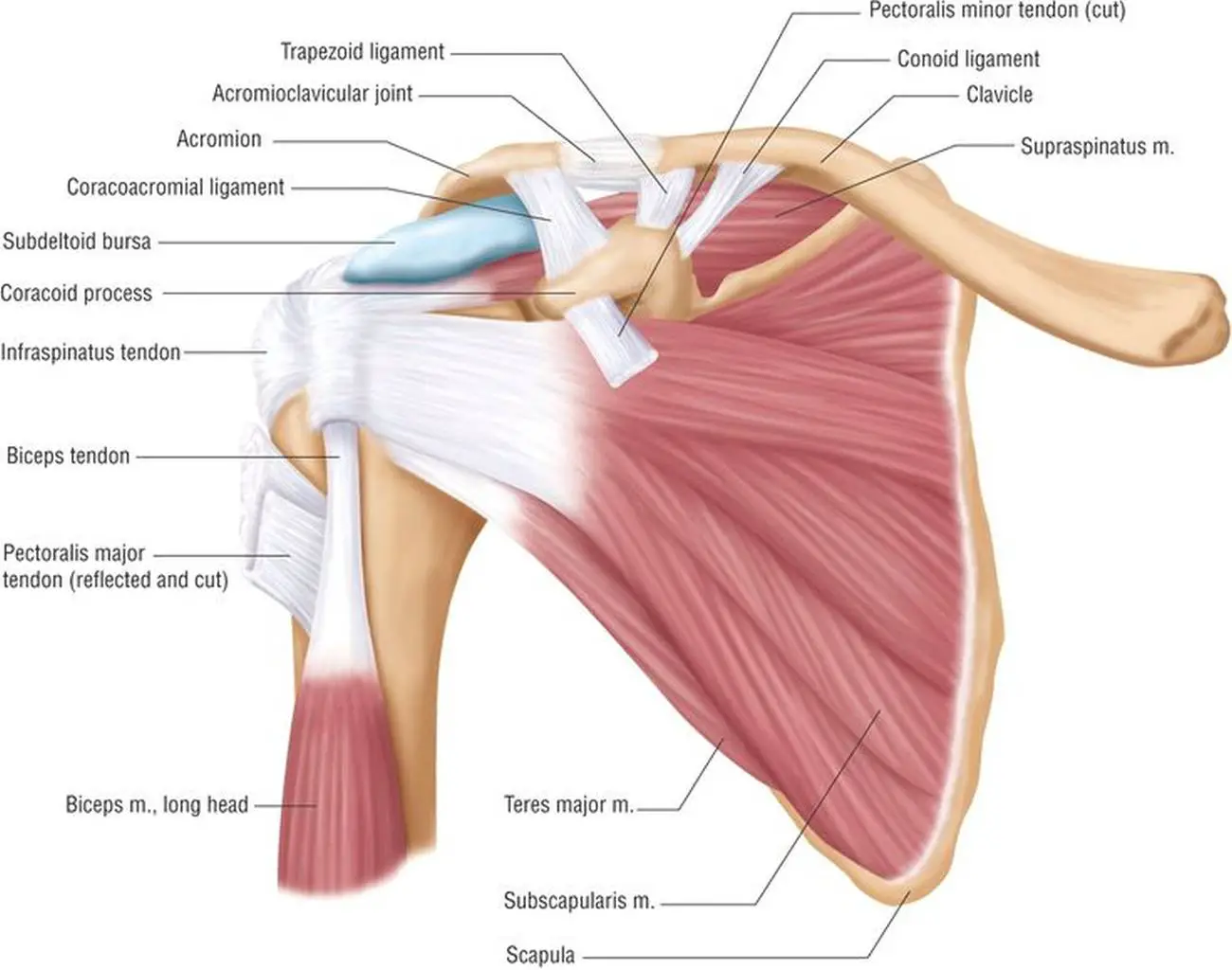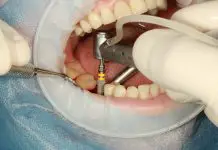Shoulder pain from a rotator cuff injury can be intense, annoying, and long lasting. The rotator cuff is held down by four tendons which cover the top of the shoulder and keep your arm in its socket.
Overtime, degeneration from overuse (typically with physical work or playing sports), injury, arthritis, or simply the wear and tear that comes with getting older can break down the soft tissues which help cushion and stabilize the rotator cuff.

Anatomy of a shoulder; image source: pinterest.com
Tightness, inflammation, even tearing can result in painful conditions like bursitis (the swelling of the adjacent bursa sac) and tendinitis (the inflammation and tearing of the rotator cuff tendons).
Depending on the severity of the rotator cuff disease or injury, and how quickly you seek medical attention, your healthcare provider may customize a treatment plan for you incorporating some of the following components:
Ice and Heat Therapy
A common application for many sprains, strains, and injuries, alternating ice and heat therapy helps reduce inflammation and alleviate pain. How does it work exactly? The cold sensation from the application of an ice pack serves more as a temporary analgesic (pain relieving) effect, numbing affected nerves.
Heat therapy is then used only after swelling has subsided, facilitating increased blood flow for healing.
Rest
The difficulty with rotator cuff injuries is that they take one of your most used limbs out of commission. Reaching up, out, or behind you becomes a painful task and often a brace or sling is employed to make you more body aware of your limitations.
Temporarily immobilizing the affected area allows the injured tissues to initiate repair and for inflammation to subside.
Exercise
Aimed to improve range of motion, a flexibility of the shoulder, and a re-strengthening of the rotator cuff and surrounding ligaments and muscles, exercise and gentle stretching may be recommended with some pain treatment plans.
Physical therapists and sports medicine specialists will lead guided instruction in person or your doctor may point you to take-home resources for simple, effective stretches and exercises to assist your healing.
Over-the-Counter Medicines
Non-steroidal anti-inflammatories (NSAIDs) may be taken to help relieve painful swelling of your shoulder injury, these typically include ibuprofen (motrin, advil), aspirin, and aleve. Some topical creams, gels, and ointments may also provide temporary pain relief, typically with a cooling to heating sensation like with capsaicin, salicylate, and menthol products.
Invasive Procedures
Depending on the extent of the injury and severity of associated pain, more invasive treatments including injections of cortisone and even surgical intervention may be required. Usually attempted after other noninvasive treatments have failed, an injection of a corticosteroid which suppresses inflammation will be administered by your doctor’s office.
Surgery is often a last resort for traumatic rotator cuff tears and degeneration from tendinitis or bursitis.
Bracing
Bracing or wrapping the shoulder, with a rotator cuff brace for example, can help stabilize the injured area, provide compression to aid with inflammation, and limit motion to prevent further injury. Many effective braces and wraps can be found in pharmacies over the counter or online – you should talk to your doctor about wearing one and for how long.
Ultrasound
When you hear ultrasound, you probably think of a pregnant woman getting to see her unborn baby, but ultrasounds are also used in diagnosis and treatment for rotator cuff shoulder pain.
The ultrasound machine sends gentle vibrations through the shoulder into deep tissues to warm them and improve blood flow to boost healing.
Electrical Stimulation
Stimulation of the muscles and nerves in the shoulder is typically achieved with electrical signals provided by a machine like a TENS (transcutaneous electrical nerve stimulators) unit.
Typically integrated into an existing physical therapy regimen, electrical stimulation treatment sends an electric current into deep shoulder tissues to relieve pain, reduce inflammation, stimulate muscles to contract, or even stimulate cellular activity to speed up healing.
Knowing what treatments are available to tackle your shoulder pain from a rotator cuff condition can better equip you for the dialogue you have with your doctor when setting up a pain treatment plan. The good news? 90% of shoulder injuries are recoverable without surgical intervention.
Vigilant care and attention combined with a host of other simple strategies like rest, ice, bracing, and stretching can have you saying goodbye to shoulder pain before you know it.








































